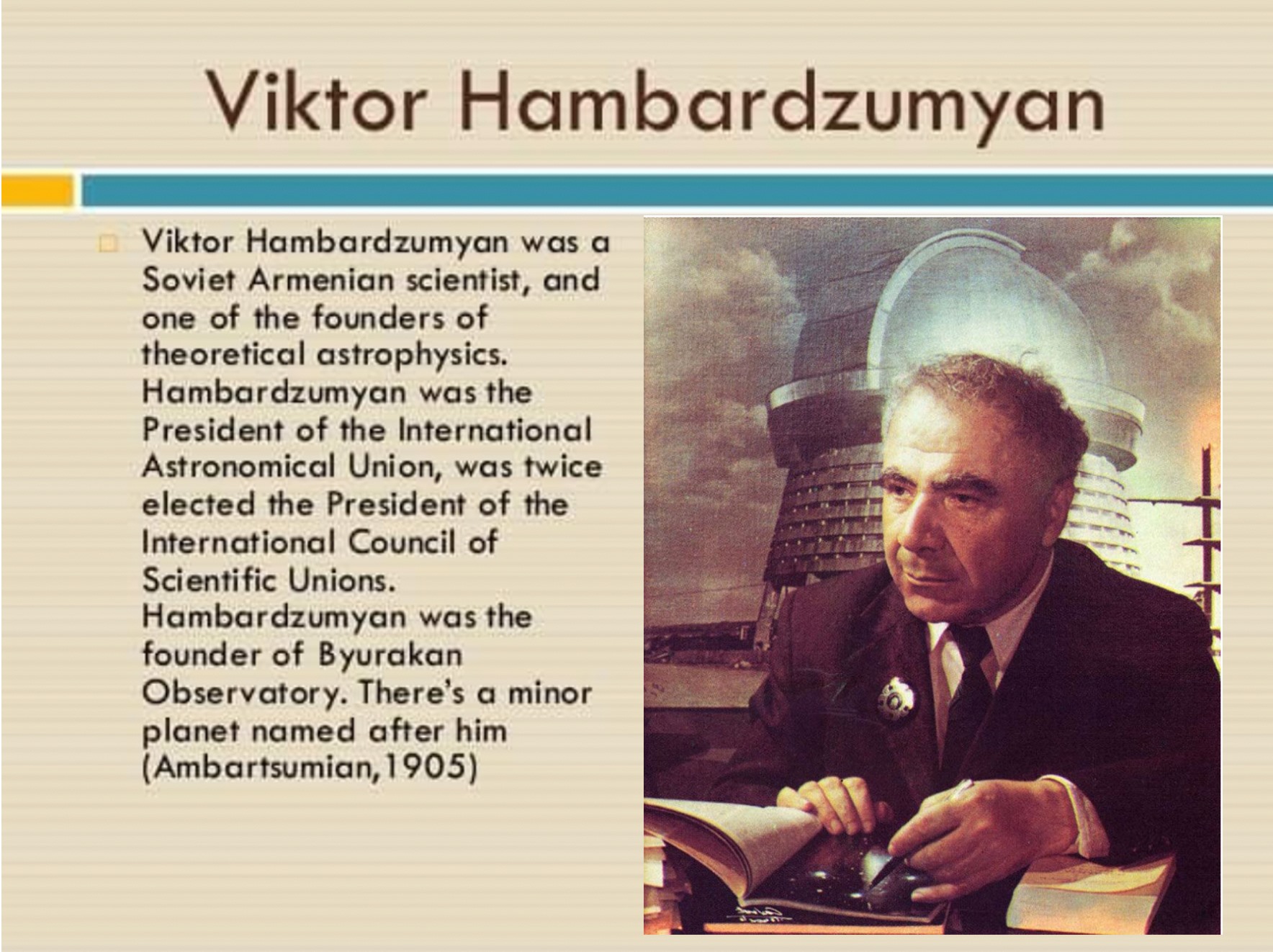One of the founders of astrophysics: Who is Victor Ambartsumian?
He is an astronomer and astrophysicist of Armenian origin, known for his theories on the origin and evolution of stars and stellar systems. He is the founder of the theoretical school of astrophysics in the Soviet Union.

USSR astrophysicist. He is best known for his theory of the formation and developmental dynamics of stars and stellar systems. Hambardzumyan was born in Tbilisi in 1908 to an Armenian family. His father, Hamazasp Asaturovich Ambartsumian, was a philologist and a writer who translated Homer's Iliad into Armenian.
Victor Ambartsumian (September 18, 1908 - August 12, 1996) was a Soviet-Armenian scientist and one of the founders of theoretical astrophysics. He worked in many areas of physics, such as stars and nebulae, stellar astronomy, stellar system dynamics, and the cosmogony of stars and galaxies, and contributed to mathematical physics.
He was born on September 18, 1908, in Tbilisi, in the Georgian USSR. He studied at Leningrad University between 1925-1928. After completing his graduate studies at Pulkova Observatory, he returned to Leningrad University in 1931 as a lecturer and researcher. In 1947, he was appointed to the professorship of astrophysics at Yerevan University. In 1945, he founded and managed the Burakan Astronomical Observatory in the USSR, Armenia. A member of the USSR Academy of Sciences after 1939, Ambartsumian was accepted as a member of the Armenian Academy of Sciences in 1943, a foreign member of the Royal Society in London in 1969, and a member of the scientific academies of India, the USA, and various European countries. He received the title of honorary doctor from Sorbonne University in 1966 for his contributions to astrophysics. He was the director of the International Astronomical Union from 1948-1955. In addition to national awards such as the State Prize, Sickle, and Hammer Gold Medal, and the Order of Lenin in 1946 and 1950, he also received international awards; These include the gold medal from the British Royal Astronomical Society and the Catherine Wolfe Bruce medal from the Pacific Astronomical Society. After 1950, he became a member of the Supreme Soviet and worked on the Central Committee of the Communist Party of Armenia and the Foreign Affairs Committee of the Soviet Union.
When Ambartsumian began his research in the late 1940s, Eddington's work on white dwarfs (stars with very high surface temperatures but very low self-luminescence) and Zwicky and Baade's on neutron stars, high density (105-10 10 g/cm3) He popularized the concept of celestial bodies. According to one theory of the formation of such bodies, stars are formed by the condensation of gaseous matter found in galaxies. Ambartsumian and his colleague Kolopov, who made observations and research on this subject during World War II, first studied star groups. Two scholars, who classified the stars with low brightness as T group and variable stars as B group, focused their studies on the formation of stars.
As a result, Ambartsumian proposed that stars were formed by a scattering of high-density and very massive (equivalent to millions of Sun's masses) matter, which he called the "first star", yet unobservable. With the scattering of this matter, stable stars such as neutron stars and white dwarfs could form, as well as T-group stars and clouds of particles. As a matter of fact, the nebula layers around some young stars can be explained according to this theory. Considering that the probability of galaxies colliding with each other is very low, Ambartsumian suggested that new galaxies are not formed by such a collision, but by the explosion of a galaxy's core (1955). In particular, the observation of radio galaxies (the galaxies that give signals in the radio region of the electromagnetic spectrum) led to the support of this theory starting in the 1960s. Also, the change in magnitudes of group B variable stars was explained by the occasional explosion of very dense bits of early stellar matter called hyper matter in their cores. Ambartsumian further explained the physical structure of the shells of meteorites; He developed the equilibrium theory of spherical small nebulae and studied the radiant lines emanating from these nebulae in the context of his theory.
In order to study star formation from nebulae, Ambartsumian needed a mathematical theory to explain the passage of light through a dilute medium. For this purpose, he made important contributions to the "radiative transmission" developed by Chandrasekhar.
WORKS (mainly):
Theoretical Astrophysics, 1939, (“Theoretical Astrophysics”);
Evoliyutsiya Zvyezdi Astrophysics, 1947, (“Evolution of the Stars and Astrophysics”);
Nauçniye Trudi, 1960, (“Scientific Studies”).
